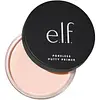What's inside
What's inside
 Key Ingredients
Key Ingredients

 Benefits
Benefits

No benefits
 Concerns
Concerns

 Ingredients Side-by-side
Ingredients Side-by-side

Cyclopentasiloxane
EmollientDimethicone
EmollientDimethicone/Vinyl Dimethicone Crosspolymer
Skin ConditioningIsononyl Isononanoate
EmollientSilica
AbrasiveDimethicone Crosspolymer
Emulsion StabilisingIsododecane
EmollientPhenoxyethanol
PreservativePolymethyl Methacrylate
CI 77891
Cosmetic ColorantCyclohexasiloxane
EmollientTocopheryl Acetate
AntioxidantParfum
MaskingMica
Cosmetic ColorantCI 77492
Cosmetic ColorantLimonene
PerfumingCI 77491
Cosmetic ColorantCI 77499
Cosmetic ColorantTriethoxycaprylylsilane
BHT
AntioxidantCyclopentasiloxane, Dimethicone, Dimethicone/Vinyl Dimethicone Crosspolymer, Isononyl Isononanoate, Silica, Dimethicone Crosspolymer, Isododecane, Phenoxyethanol, Polymethyl Methacrylate, CI 77891, Cyclohexasiloxane, Tocopheryl Acetate, Parfum, Mica, CI 77492, Limonene, CI 77491, CI 77499, Triethoxycaprylylsilane, BHT
Water
Skin ConditioningCyclopentasiloxane
EmollientCeresin
Emulsion StabilisingDimethicone
EmollientGlycerin
HumectantHydrogenated Polyisobutene
EmollientHdi/Trimethylol Hexyllactone Crosspolymer
Polymethylsilsesquioxane
Trimethylsiloxysilicate
EmollientPropylene Glycol
HumectantLauryl PEG-10 Tris(Trimethylsiloxy)Silylethyl Dimethicone
EmulsifyingSodium Chloride
MaskingCamellia Sinensis Leaf Extract
AntimicrobialSqualane
EmollientOryza Sativa Bran Wax
Skin ConditioningDimethicone/PEG-10/15 Crosspolymer
Dimethicone Crosspolymer
Emulsion StabilisingSilica
AbrasiveTriethoxycaprylylsilane
Talc
AbrasiveButylene Glycol
HumectantDisodium EDTA
Caprylyl Glycol
EmollientEthylhexylglycerin
Skin ConditioningPhenoxyethanol
PreservativeCI 77891
Cosmetic ColorantIron Oxides
Water, Cyclopentasiloxane, Ceresin, Dimethicone, Glycerin, Hydrogenated Polyisobutene, Hdi/Trimethylol Hexyllactone Crosspolymer, Polymethylsilsesquioxane, Trimethylsiloxysilicate, Propylene Glycol, Lauryl PEG-10 Tris(Trimethylsiloxy)Silylethyl Dimethicone, Sodium Chloride, Camellia Sinensis Leaf Extract, Squalane, Oryza Sativa Bran Wax, Dimethicone/PEG-10/15 Crosspolymer, Dimethicone Crosspolymer, Silica, Triethoxycaprylylsilane, Talc, Butylene Glycol, Disodium EDTA, Caprylyl Glycol, Ethylhexylglycerin, Phenoxyethanol, CI 77891, Iron Oxides
 Reviews
Reviews

Ingredients Explained
These ingredients are found in both products.
Ingredients higher up in an ingredient list are typically present in a larger amount.
Ci 77891 is a white pigment from Titanium dioxide. It is naturally found in minerals such as rutile and ilmenite.
It's main function is to add a white color to cosmetics. It can also be mixed with other colors to create different shades.
Ci 77891 is commonly found in sunscreens due to its ability to block UV rays.
Learn more about CI 77891Cyclopentasiloxane, or D5, is a silicone used to improve texture of products and trap moisture.
D5 is considered lightweight and volatile. Volatile means it evaporates quickly after application. Once evaporated, D5 leaves a thin barrier that helps keep skin hydrated.
It is also an emollient. Emollients help soften the skin and prevent water loss. Silicones create a silky texture in products. D5 helps other ingredients become more spreadable.
Studies show D5 is safe to use in skincare products. We recommend speaking with a skincare professional if you have concerns.
Learn more about CyclopentasiloxaneDimethicone is a type of synthetic silicone created from natural materials such as quartz.
What it does:
Dimethicone comes in different viscosities:
Depending on the viscosity, dimethicone has different properties.
Ingredients lists don't always show which type is used, so we recommend reaching out to the brand if you have questions about the viscosity.
This ingredient is unlikely to cause irritation because it does not get absorbed into skin. However, people with silicone allergies should be careful about using this ingredient.
Note: Dimethicone may contribute to pilling. This is because it is not oil or water soluble, so pilling may occur when layered with products. When mixed with heavy oils in a formula, the outcome is also quite greasy.
Learn more about DimethiconeDimethicone Crosspolymer is a silicone created by modifying dimethicone with hydrocarbon side chains. Due to its large size, it does not penetrate skin. It is considered non-occlusive.
Dimethicone Crosspolymer is used to stabilize and thicken products. It also helps give products a silky feel.
Phenoxyethanol is a preservative that has germicide, antimicrobial, and aromatic properties. Studies show that phenoxyethanol can prevent microbial growth. By itself, it has a scent that is similar to that of a rose.
It's often used in formulations along with Caprylyl Glycol to preserve the shelf life of products.
Silica, also known as silicon dioxide, is a naturally occurring mineral. It is used as a fine, spherical, and porous powder in cosmetics.
Though it has exfoliant properties, the function of silica varies depending on the product.
The unique structure of silica enhances the spreadability and adds smoothness, making it a great texture enhancer.
It is also used as an active carrier, emulsifier, and mattifier due to its ability to absorb excess oil.
In some products, tiny microneedles called spicules are made from silica or hydrolyzed sponge. When you rub them in, they lightly polish away dead skin layers and enhance the penetration of active ingredients.
Learn more about SilicaTriethoxycaprylylsilane is a silicone used to bind and stabilize ingredients.
As an emulsifier, it helps prevent ingredients from separating. This can help elongate the shelf life of products.
Triethoxycaprylylsilane is often used to coat mineral sunscreens ingredients to help give a better feel. It also helps reduce oxidative stress in sunscreens.
Learn more about Triethoxycaprylylsilane